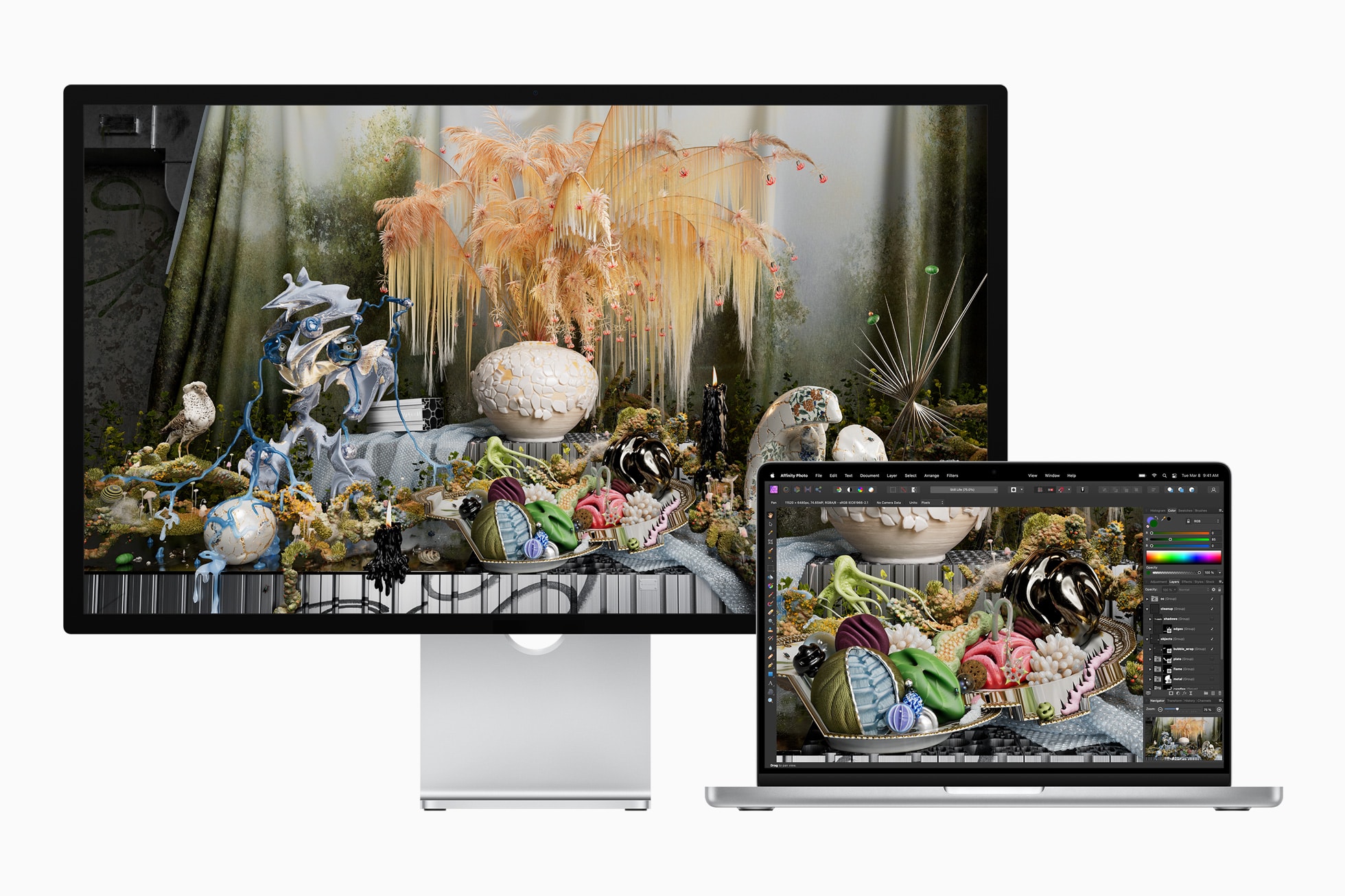
Apple unveiled its Studio Display at the Peek performance event. It shared the stage with the new 2022 iPhone SE 3, the iPad Air 5, and the brand’s latest and greatest Mac Studio powered by the M1 Ultra chip. The new standalone monitor is an exciting product, and here are five things you should know about it.
First, let’s get the technical specifications out of the way. The Studio Display is a 27-inch monitor that can be connected to any Mac, PC, or iPad. It boasts of a 5K resolution Retina display with 14.7 million pixels and features three mics and six speakers with Dolby Atmos and Spatial Audio support. There’s an integrated 12MP FaceTime camera with Center Stage support. Pricing for Apple’s Studio Display starts at $1,599, with the height-adjustable stand and nano-texture glass coating being optional extras.
1. Polishing Cloth is Not Bundled
Apple’s Studio Display is targeted at professionals and creators, just like the Pro Display XDR that came years before it. The company bundles a $20 Polishing Cloth with both the standard glass variant and the nano-texture glass variant of the Pro Display XDR. However, the new Studio Display does not get the accessory in the box, and if you want a Polishing Cloth to clean your nano-texture glass effectively, you will have to buy it separately.

2. Limited Support for iPads
Apple’s new Studio Display can be hooked up to a wide range of displays, including Macs from as far back as 2016. However, its iPad compatibility is limited.
The Studio Display is only compatible with the new iPad Air 5, 11-inch iPad Pro, third-generation 12.9-inch iPad Pro, and newer iPad Pro models. These iPads support the USB 3.1 Gen 2 standard and have 10Gbps data throughput. Older and unsupported iPads won’t work at full resolution with the Studio Display as they are limited by the USB 3.1 Gen 1 standard’s 5Gbps data throughput. So, they will only deliver a 1440p (2K) signal to the Studio Display.

3. A13 Bionic
An interesting tidbit about the Studio Display is that it packs an A13 Bionic chip inside. Yes, that is the same chip that powered the iPhone 11. You might wonder why a standalone needs a powerful processor on the inside when all the computation will be handled by the Mac or iPad it is connected to. The A13 is required to power the integrated 12MP camera with Center Stage.

4. Expensive Optional Extras
The Studio Display’s $1,599 asking price is rather steep. The money buys you the monitor itself, a 1m long Thunderbolt cable, and a tilt-adjustable stand or VESA mount adapter. Apple claims that the standard glass is “engineered for extremely low reflectivity,” but if that does not suffice, you can opt for the $300 nano-texture glass option that further reduces glare and scatters light.
The aluminum stand bundled with the monitor only offers 30 degrees of tilt adjustment — 5 degrees downwards and 25 degrees upwards. If you want greater flexibility, we suggest you opt for the variant with a VESA mount so you can affix the Studio Display to a monitor arm you already have. If you want an Apple-made stand with more adjustability, you will have to shell out another $400 for the tilt and height-adjustable stand that offers the same 30 degrees of tilt and 105mm of height adjustability.
So, if you spec your Studio Display with Nano-Texture glass and the costlier stand, you could end up spending $2,299 for a standalone display. To maintain the glass, you might want to add a $20 Polishing Cloth as well, bringing the effective price up to $2,319 — a far cry from the advertised $1,599 base price

5. Stands Aren’t Interchangeable
Before pulling the trigger on your Studio Display purchase, you must know that you cannot change your mind after the purchase and swap the tilt-adjustable stand for the pricier tilt and height-adjustable variant. You also even affix the VESA adapter to a monitor once you purchase it with a stand. This is because Apple, in its infinite wisdom, decided to integrate the stands into the Studio Display’s body such that the average user cannot detach them.
To its credit, Apple warns you of this limitation on its Studio Display product page if you read through the fine print.
Now that you are fully aware of the advantages and limitations of buying the new Apple Studio Display, are you still inclined to purchase it? Tell us in the comments section below. You can pre-order the display today.